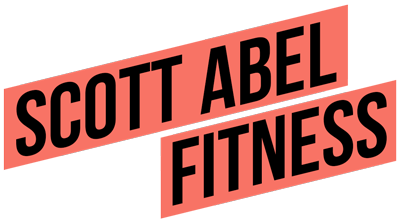When I released Lean Without Trying, I got a lot of questions from people worried that I would be focusing exclusively on vegetarian or vegan dieting. (The answer is no.)
In fact, most of my books still illustrate examples of an omnivore diet-strategy. The meal plans in The Cycle Diet, for example, contain lots of animal protein.
And if you compare the two sets of strategies, you’ll find far more similarities than you'll find differences.
The most important thing to keep in mind here is that a diet strategy has to serve you as much as you serve it. That was the main thinking behind both these diet strategies, and this idea accounts for many of their similarities:
- In both Lean Without Trying and in The Cycle Diet I use a carbs-based approach. A carbs-based approach is best for getting people lean and for protecting metabolism in the long-term.
- In both approaches I recommend healthy whole foods as much as possible. Again, it’s better for leaning out, and it’s better for protecting metabolism long-term.
- In both approaches I don’t “like” counting calories. I provide starting formulas and such in my books, or basic rules to figure out portion sizes, but my clients know that with the meal plans I send them, I don’t use calorie numbers. The Cycle Diet is more strict, and uses calorie formulas to start, but I prefer you just stick to whatever meal plan you use, then tweak that.
- Finally, both strategies use a cheat day or overfeed day about once per week. (Although, as we will see, the day off is a bit different in each case.)
If the strategies are so similar, why did I myself eliminate meat and dairy from my diet in the first place? Why do I think it has advantages for physique enhancement?
The short answer is that I have found that a whole foods, plants-based diet strategy makes it simpler and easier for normal, everyday regular people to accomplish physique transformations. If you’re not planning to step onto the competition stage, a whole foods, plants-based approach is much easier in terms of health, hunger, satiety, and sustainability. This is why I named my book “Lean Without Trying.” Once you adapt to this strategy, it really does feel as though it takes much less effort.
The Key Difference: Supercompensation Mode
By itself, the Lean Without Trying approach isn’t just “the Cycle Diet—but vegan.”
Let me explain.
The Cycle Diet is all about cycling regular underfeeding with well-timed refeeds—or periods of overfeedings—in order to achieve and sustain leanness while optimizing metabolism. It relies on eating in a relative caloric deficit in order to put your body into supercompensation mode.
Once this occurs, when you take in a massive influx of calories on your cheat day, your body “super compensates” in terms of energy storage. That is, instead of storing those calories as fat, your body stores them as energy (e.g. muscle glycogen), and there are various positive effects on metabolism and hormones (e.g. leptin). This has long-term benefits in terms of maintaining leanness, especially if you want to gain muscle without having to gain too much fat, as in a more traditional bulk.
The key idea is “supercompensation mode.” I’ll come back to it in a second.
Technically speaking, what I’ve said here means that almost any diet strategy at all could be employed with a Cycle Diet approach, provided you were in a relative caloric deficit and you monitored your biofeedback properly. You could do carb cycling, for example. You could even do a keto diet, although unlike most people advocating some form of “cheat day” I actually wouldn’t advise it for reasons I won’t go into here.
Although, like the Cycle Diet, the Lean Without Trying approach also includes one day off per week, it isn’t just the Cycle Diet—but vegan, and this is mainly because, by itself, it is much less about taking advantage of supercompensation mode.
The Lean Without Trying Approach is much more about re-establishing a very natural and healthy hunger and satiety feedback loop, while still supporting an optimized metabolism. It’s meant to get your hunger, cravings, digestion and satiety back in check.
There is less emphasis on calorie counting and portion control because there doesn’t need to be much of an emphasis on them, at least not once animal proteins and animal fats are removed from the meal to meal diet-strategy. Replacing animal protein with starches, fruits and vegetables has a pronounced effect on metabolism, on things like energy usage and colonic production of short-chain fatty acids that directly and healthily resets hunger, satiety, cravings in very natural and constructive and productive ways.
This tends to optimize metabolism by a distinctly different route than does cycling underfeeding with overfeeding.
What this means is that on a WFPB diet you can eat till you feel satiated and likely still lean out without having to focus on underfeeding in the same way you do as on the Cycle Diet. After a short period of time, you will find you can eat more but you will not overeat.
With this in mind, the days off on the Lean Without Trying Approach are likely to be not quite as crazy as the cheat days on the Cycle Diet.
You’re not really “super compensating” in the same way, so your cheat days are more moderate — your body doesn’t need that many extra calories.
Both are about optimizing metabolism and maintaining leanness, but they take a slightly different route to get there.
Which approach is best for you?
Some people love the whole practice of underfeeding with epic overfeed/refeed days like The Cycle Diet outlines. For many people it is just a “fun” diet-strategy to follow. If that’s you, go for it!
Other people actually don’t like that style of dieting, perhaps because they just find that the refeed days are too hard on them digestively or they just don’t like the feeling over-stuffed on a refeed day and risking a food hangover the day after. Or, they want to be a bit more flexible in general, since the Cycle Diet really does require you to stick to the plan during your regular diet days so that you stay in supercompensation mode.
For these people, the 6-day vegan diet strategy is a perfect fit. You don’t have to worry about quantifying your underfeeding on diet days, nor do you have to experience as deep a level of hunger on diet days; this also means that on refeed days, you are far less likely to overeat and overstuff yourself. Since you don’t “need” to be in supercompensation mode, you can also be more flexible and move your one day off around a bit more. (You can do this a little bit on the Cycle Diet too, but you have to pay much more attention to the supercompensation mode aspect of things.)
Can you do “the Cycle Diet—but vegan”?
The short answer is yes, provided you keep in mind what I said about supercompensation mode.
I said above that any diet strategy can work with the Cycle Diet, and a plants-based approach is no exception. If someone wanted to, it is entirely possible to do a vegan version of The Cycle Diet involving true supercompensation mode and more intense refeeds. However, if you do that, you do have to follow the Cycle Diet as it’s laid out. Remember that you have to achieve a relative caloric deficit and stick to the plan, and you have to properly assess your own body’s signals to determine when you’re in supercompensation mode.
Relative to the approach in Lean Without Trying, there would be less flexibility. For example, in my Lean Without Trying book I recommend the capital-S directive for portion control, but that would be a bit too ambiguous and laissez-faire for the Cycle Diet. For the Cycle Diet you’d want to stick to a regular meal plan that establishes a relative caloric deficit, and though “tolerable hunger” is important, you don’t want to “just” go by satiety signals.
Conclusion
For various reasons, I’ve always been a fan of a six-days-on, one-day-off approach. I find this style of dieting is good psychologically and in terms of lifestyle and sustainability.
It also helps prevent rigid thinking. For example, in the case of a plants-based approach, you can be less “strictly” vegan or vegetarian on your off day, especially when you’re first getting started. On the Cycle Diet approach, it can be about allowing for the fact that we live in the world of food abundance, and it’s okay to enjoy that sometimes (you don’t have to be “perfect” to stay lean).
I’ll bring this all back to something I’ve said many times before: any diet-strategy must fulfill two functions:
1) it must be sustainable, and
2) it must serve the body.
Both the Cycle Diet and the Lean Without Trying approach fulfill those criteria. You can adapt them, sure, but if you do, you must keep those criteria in mind!

